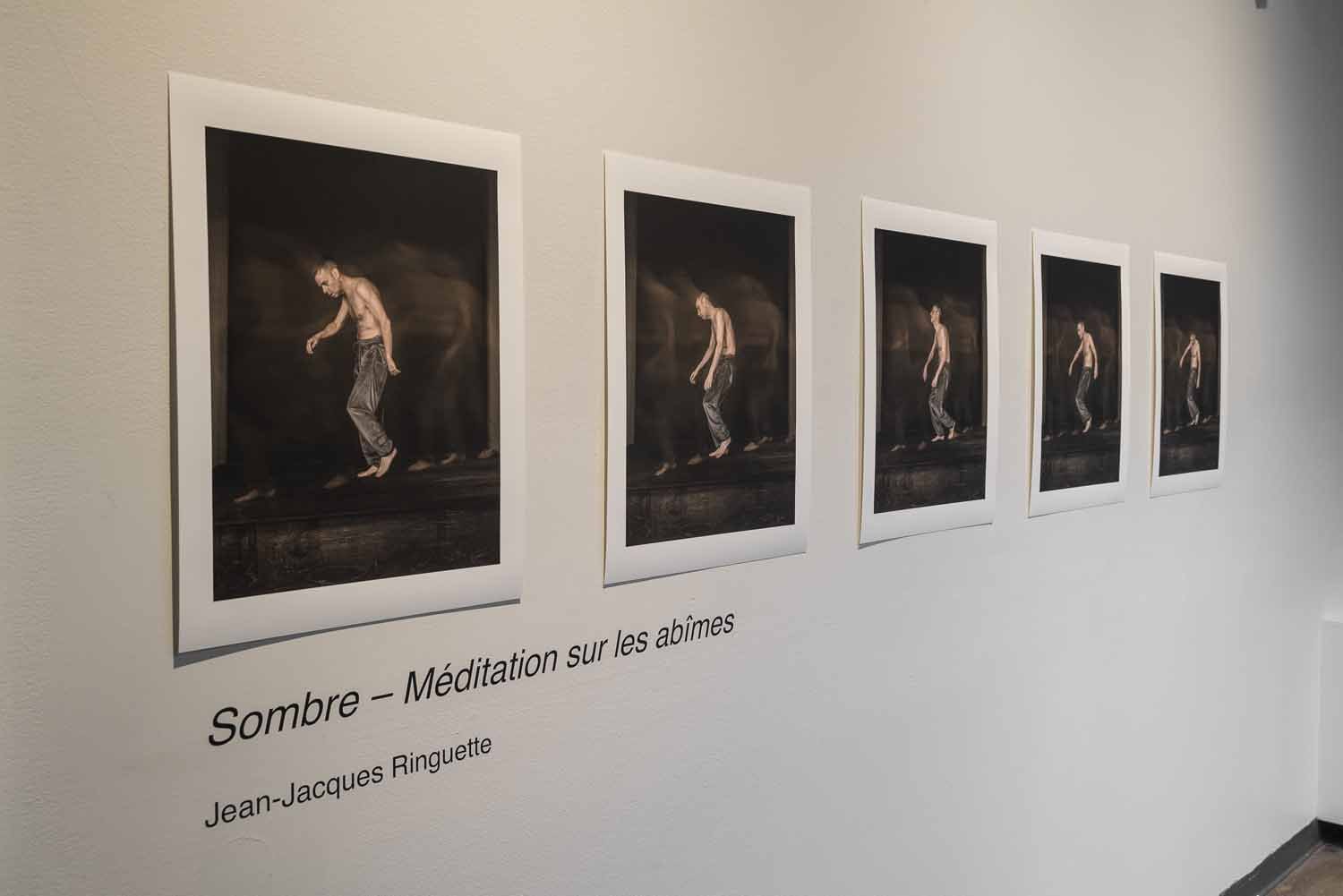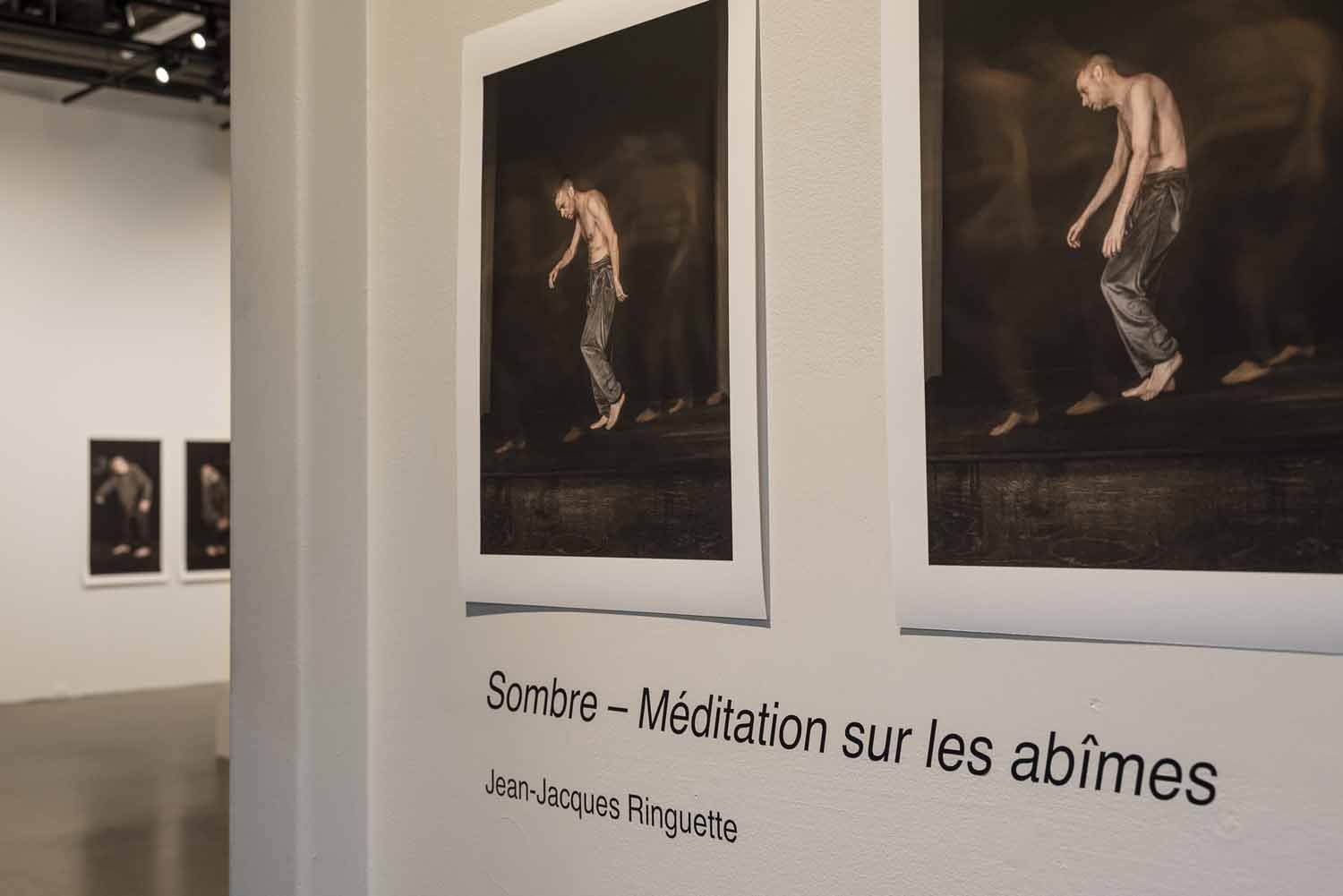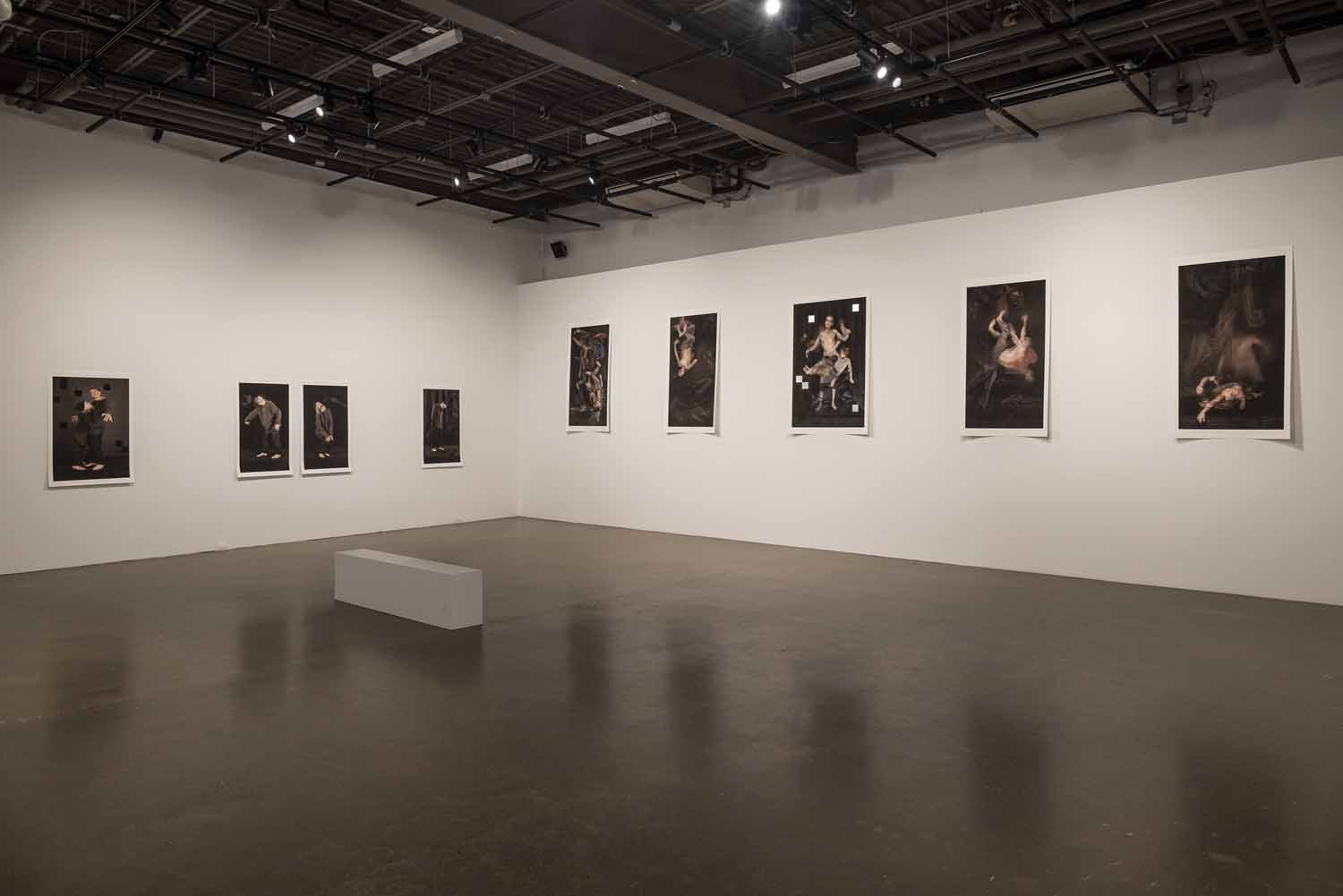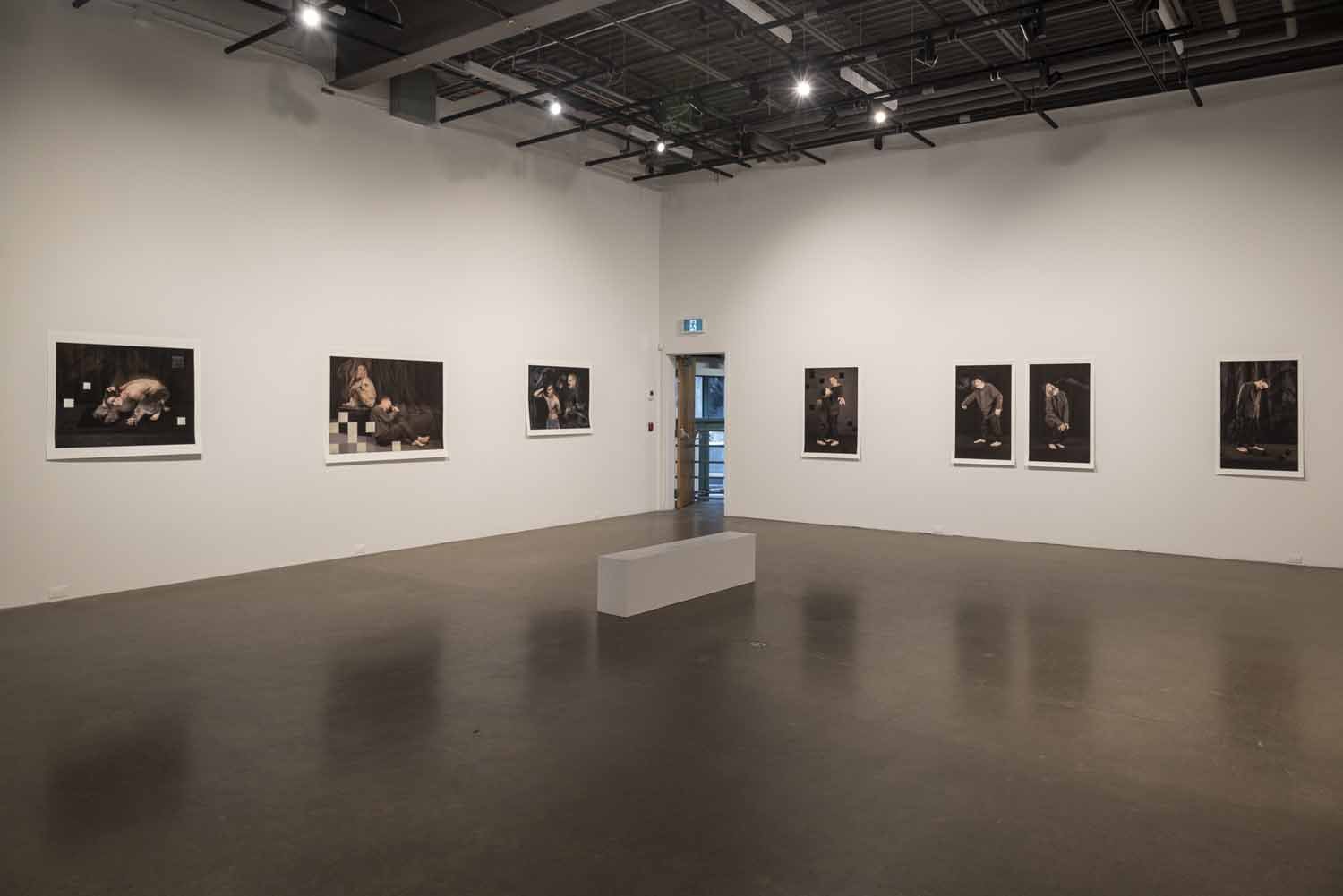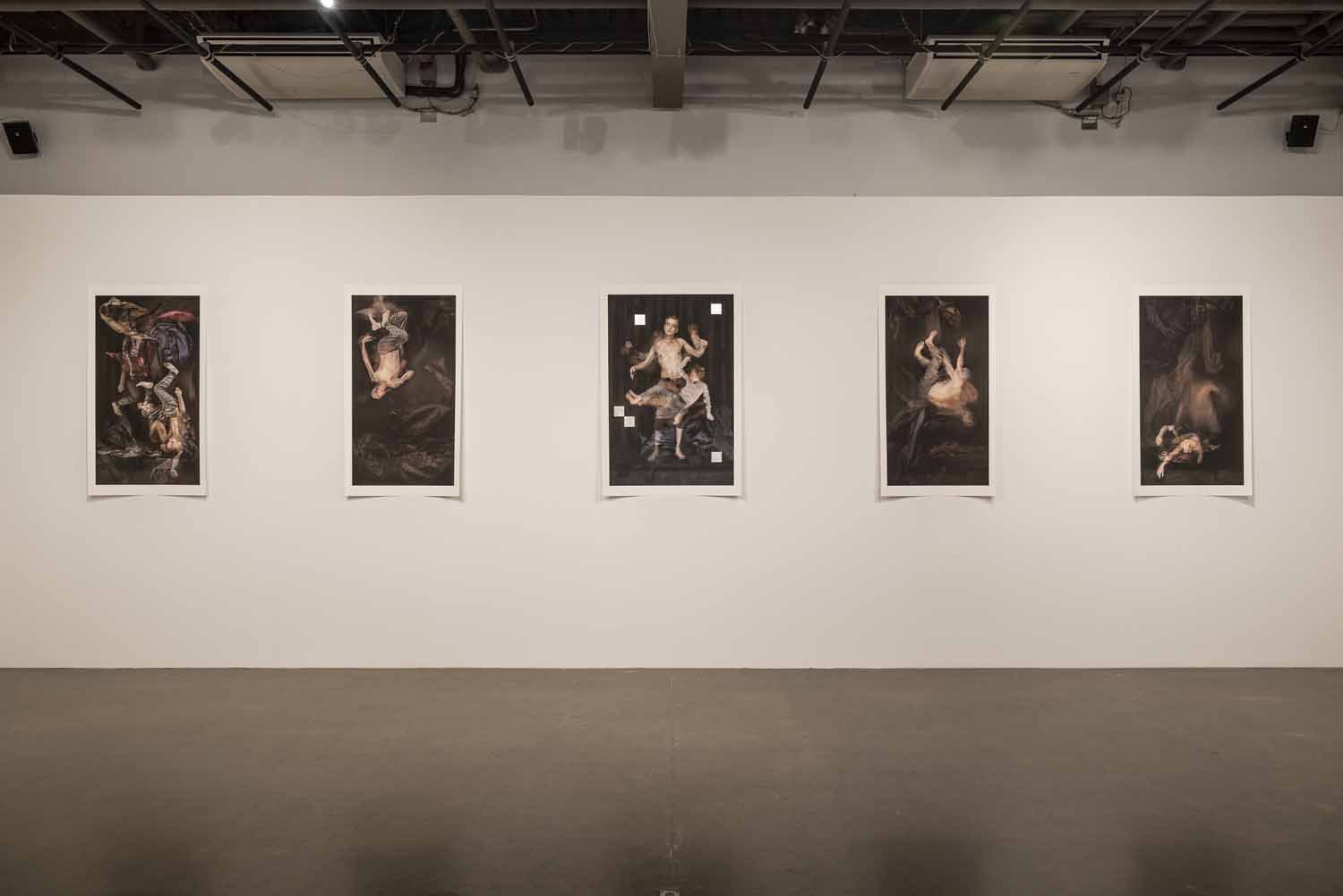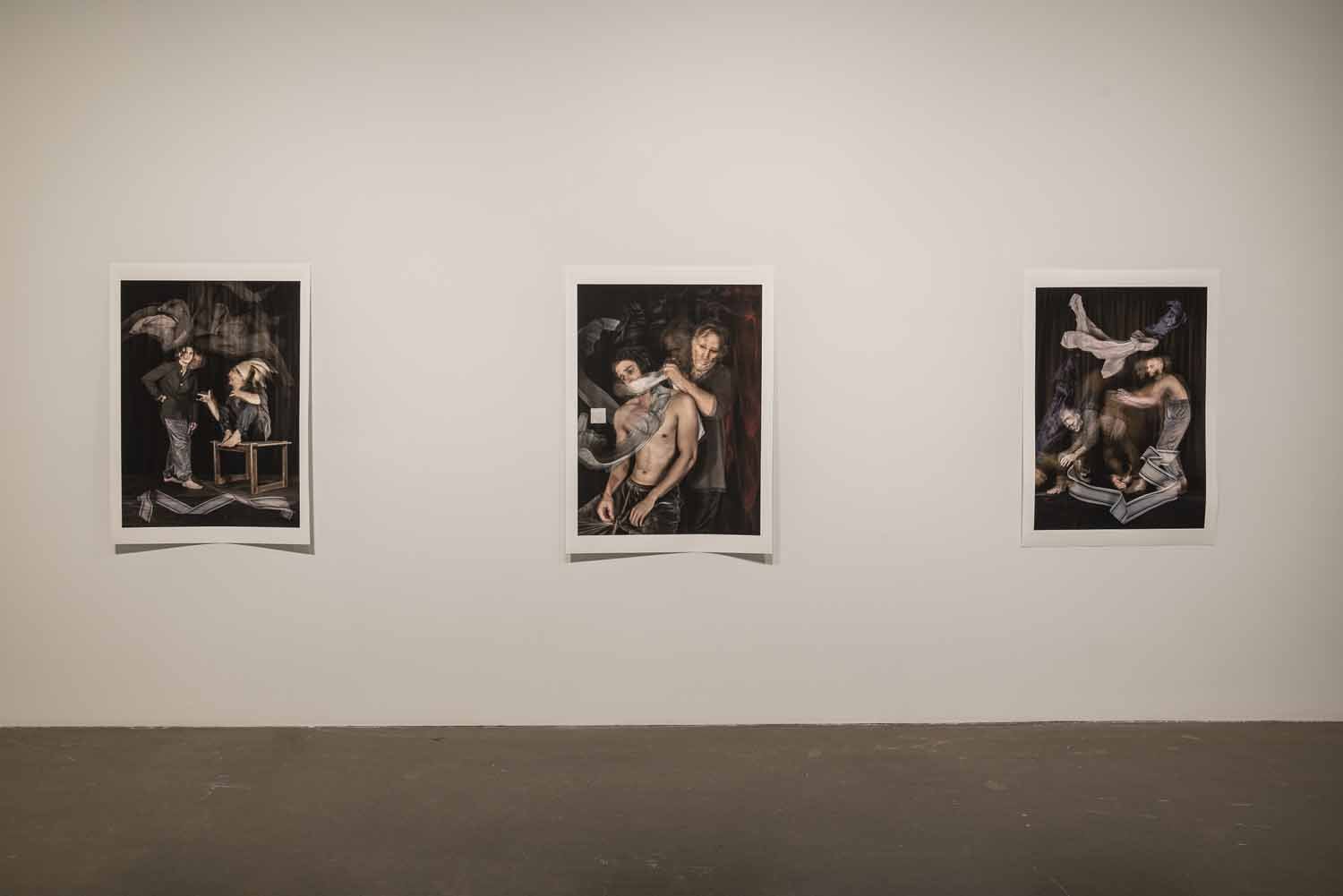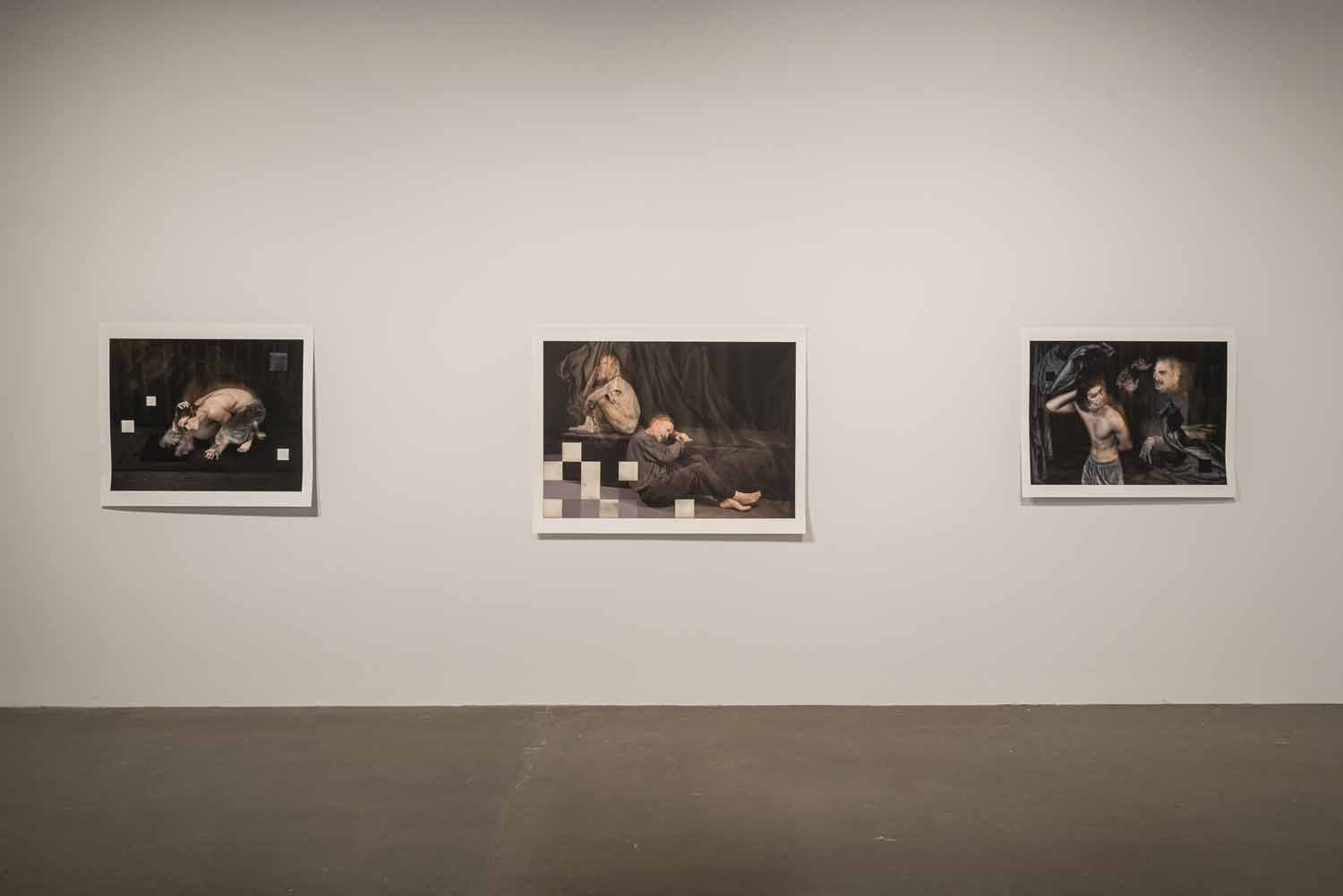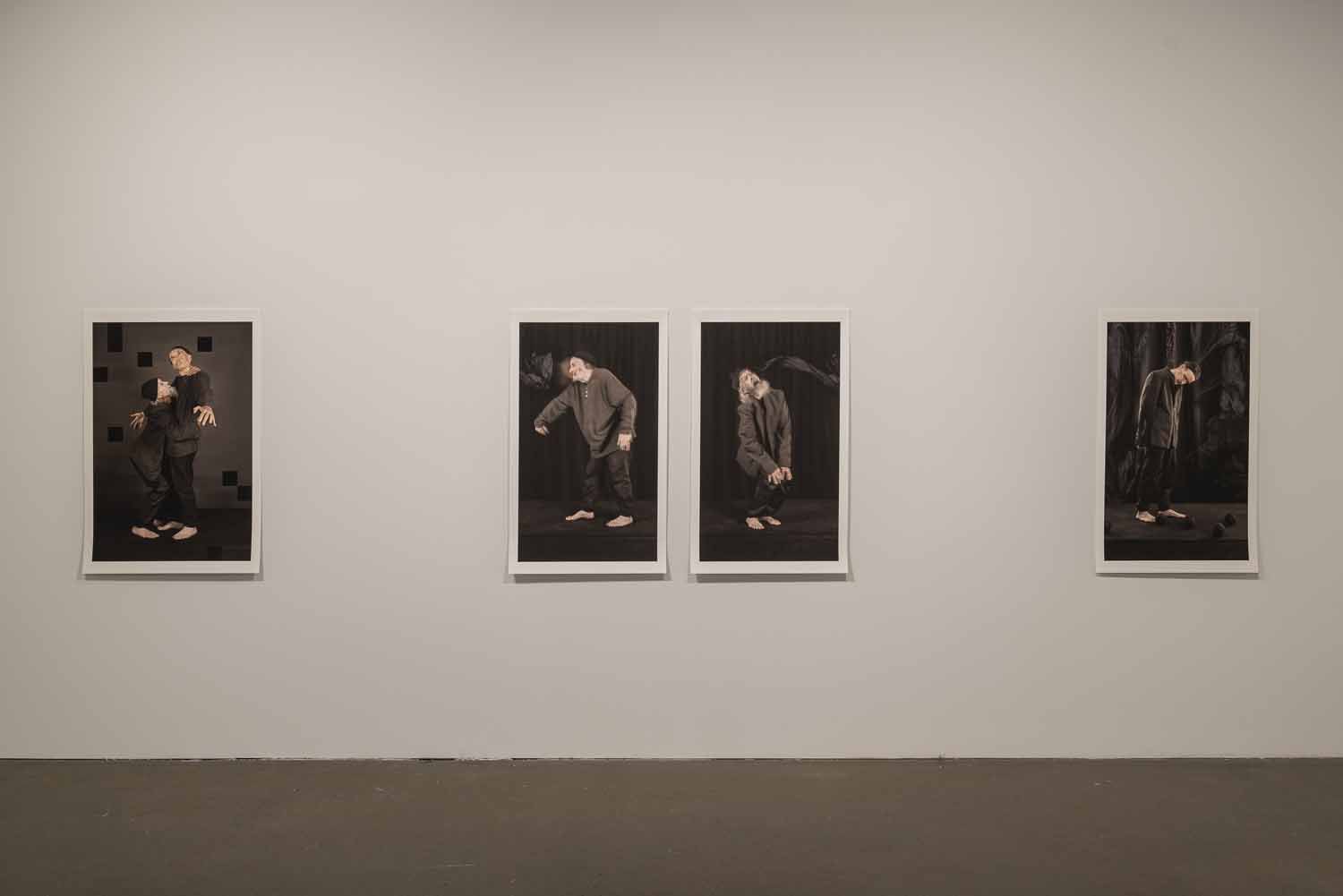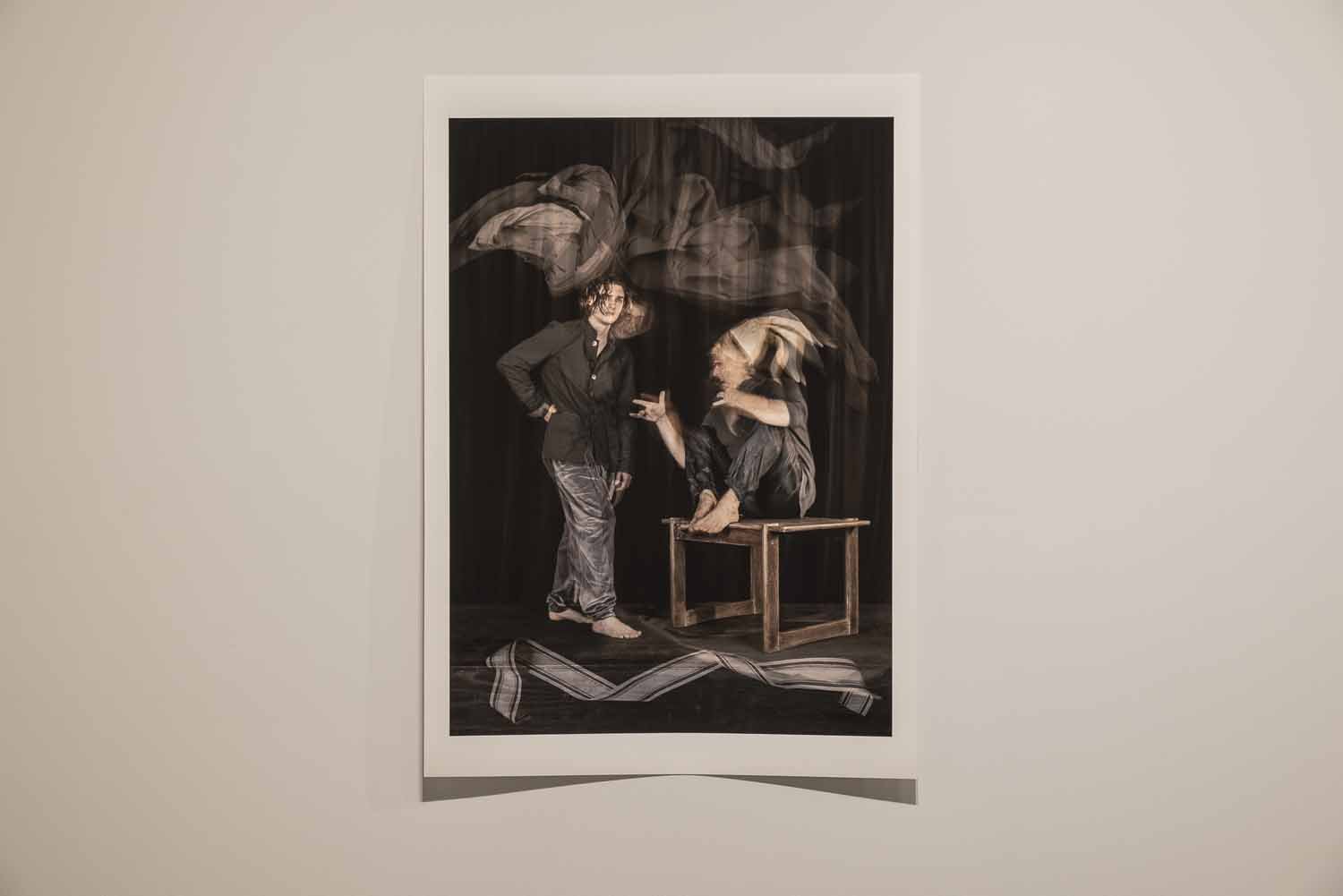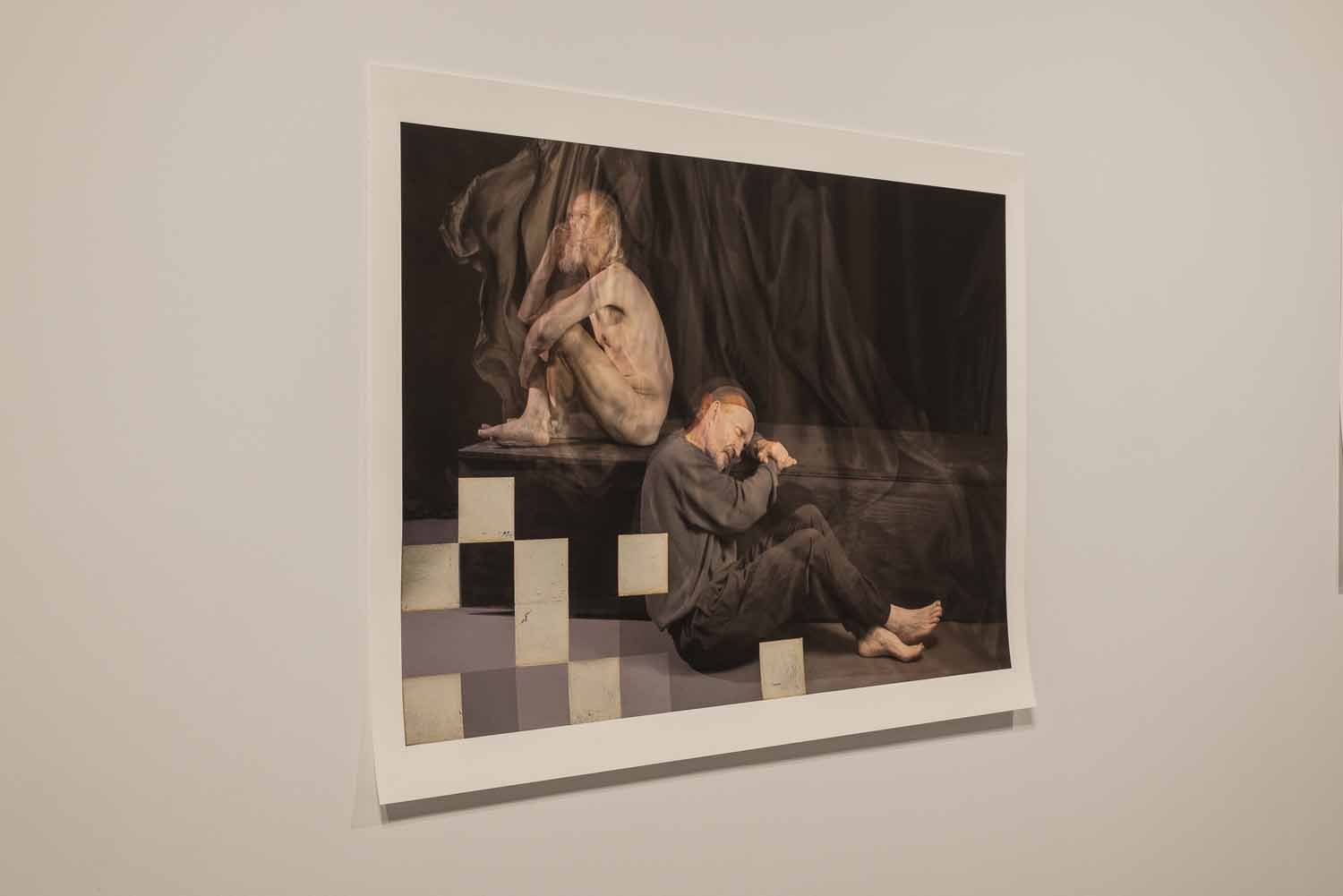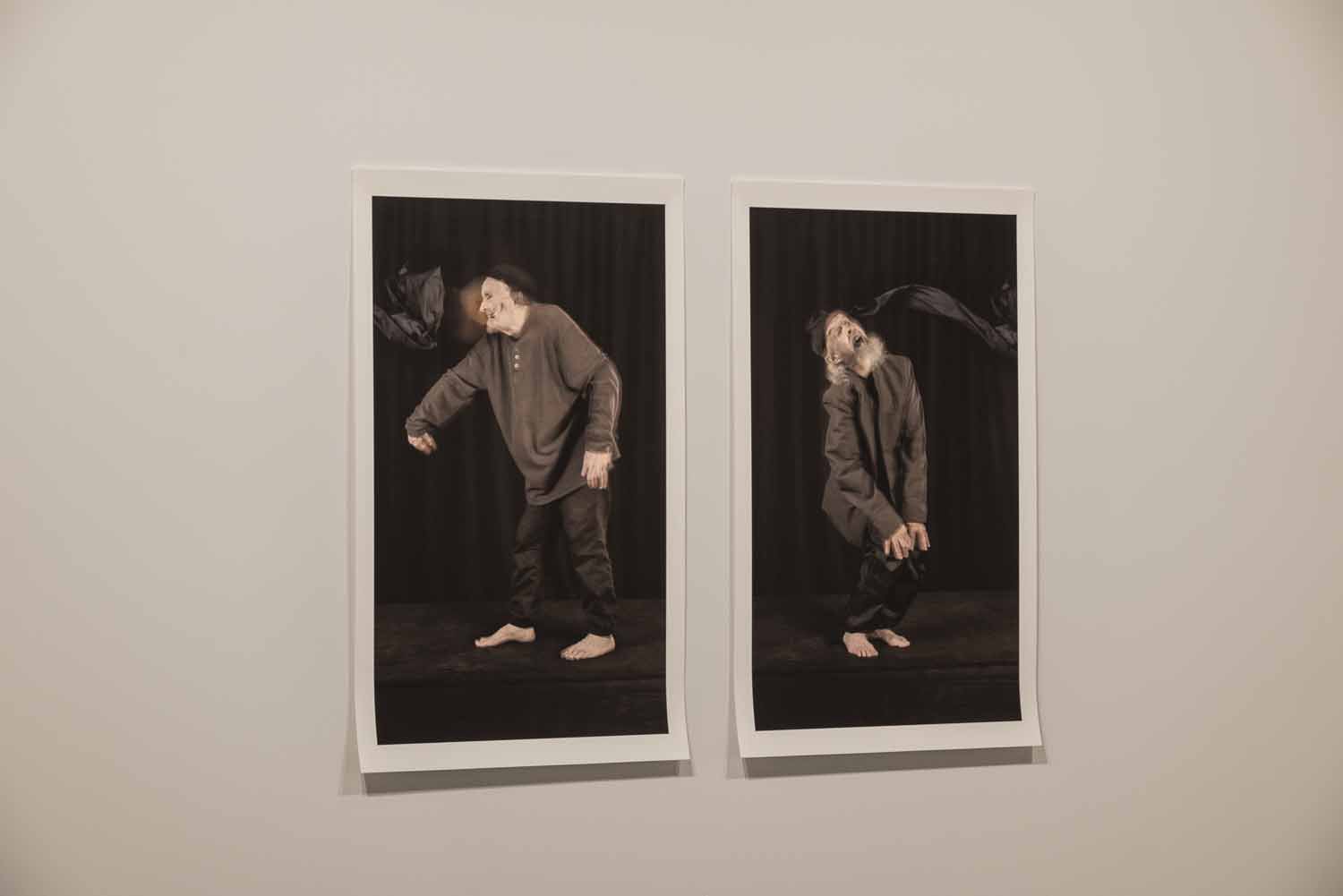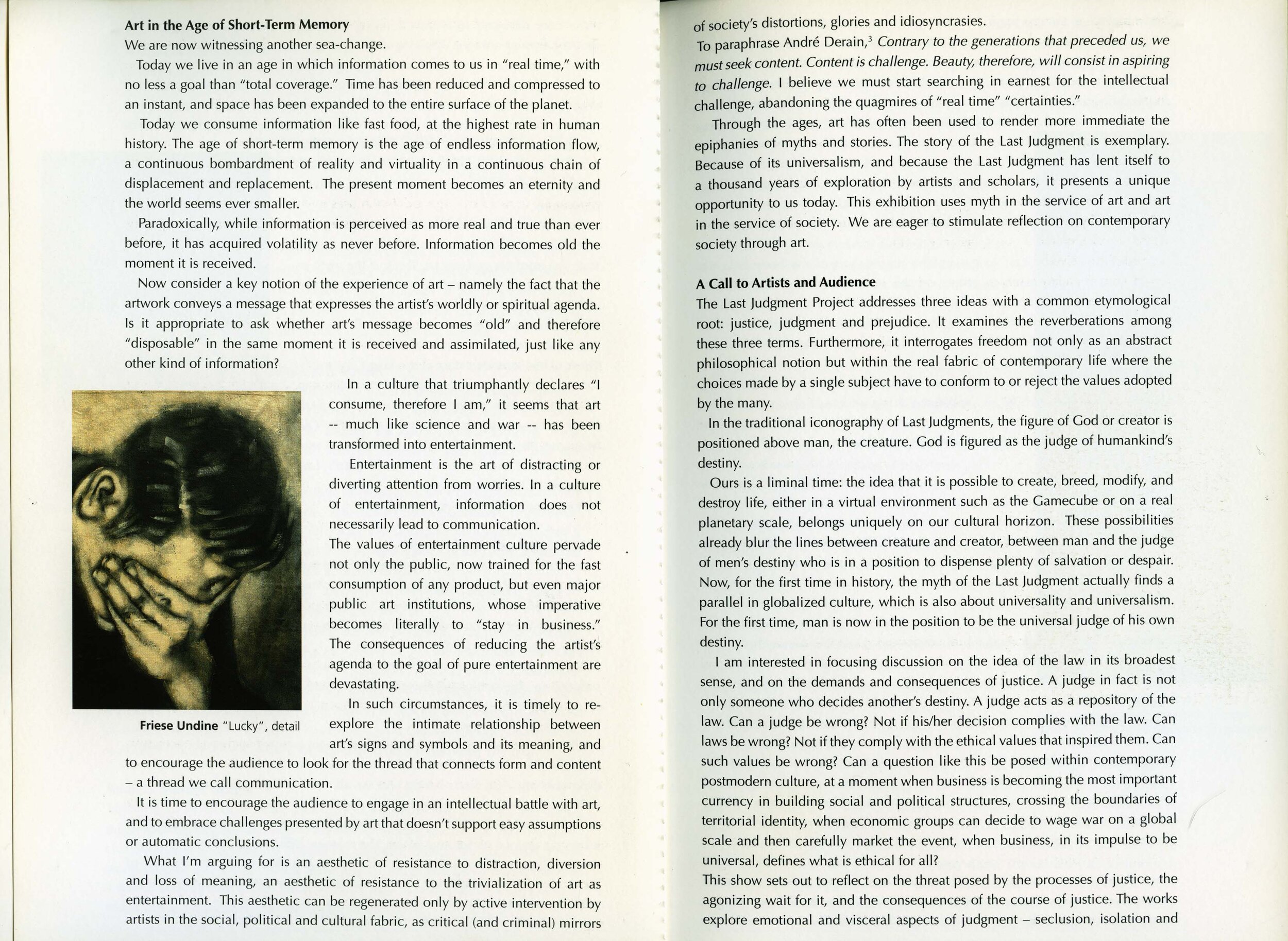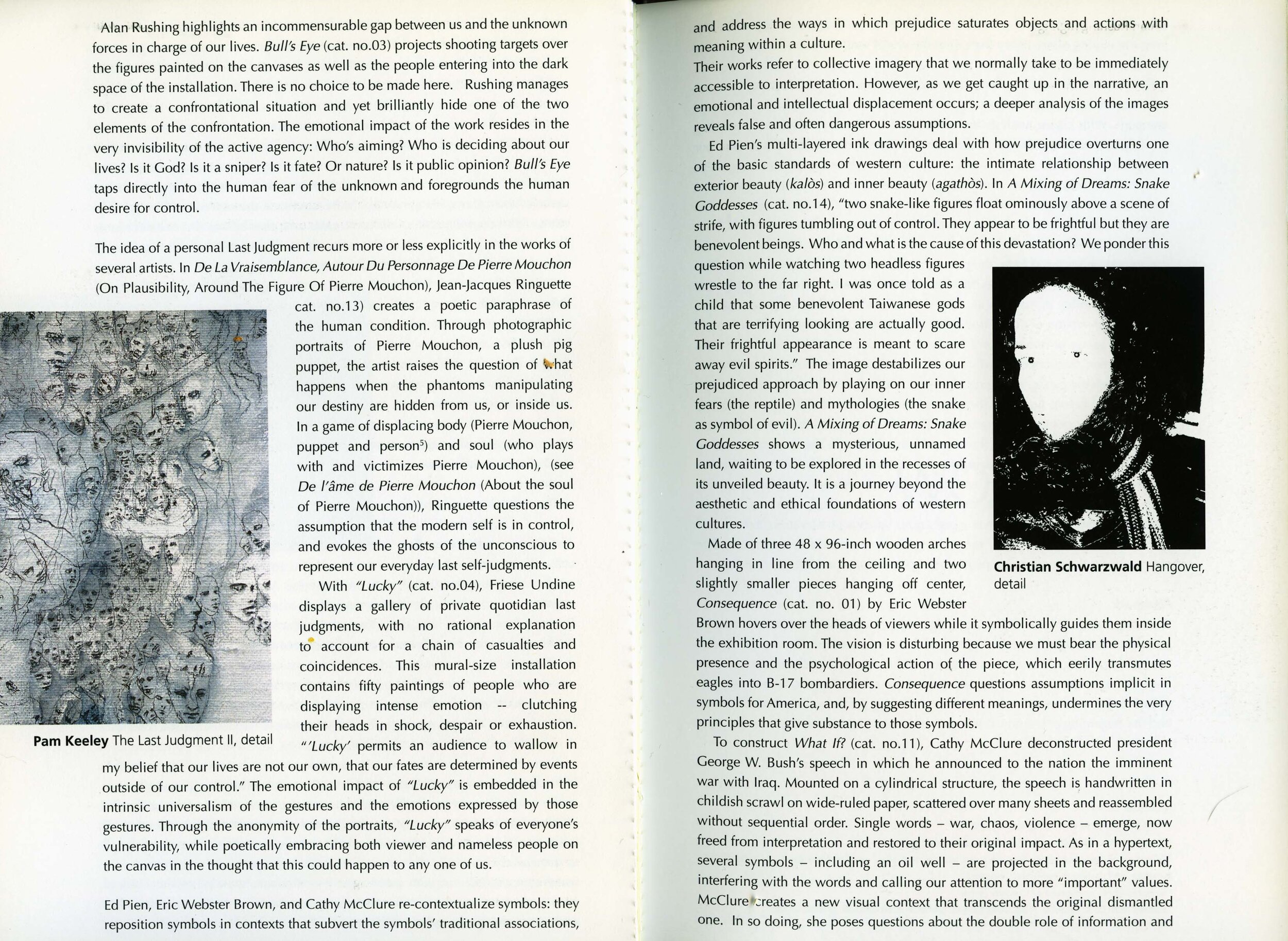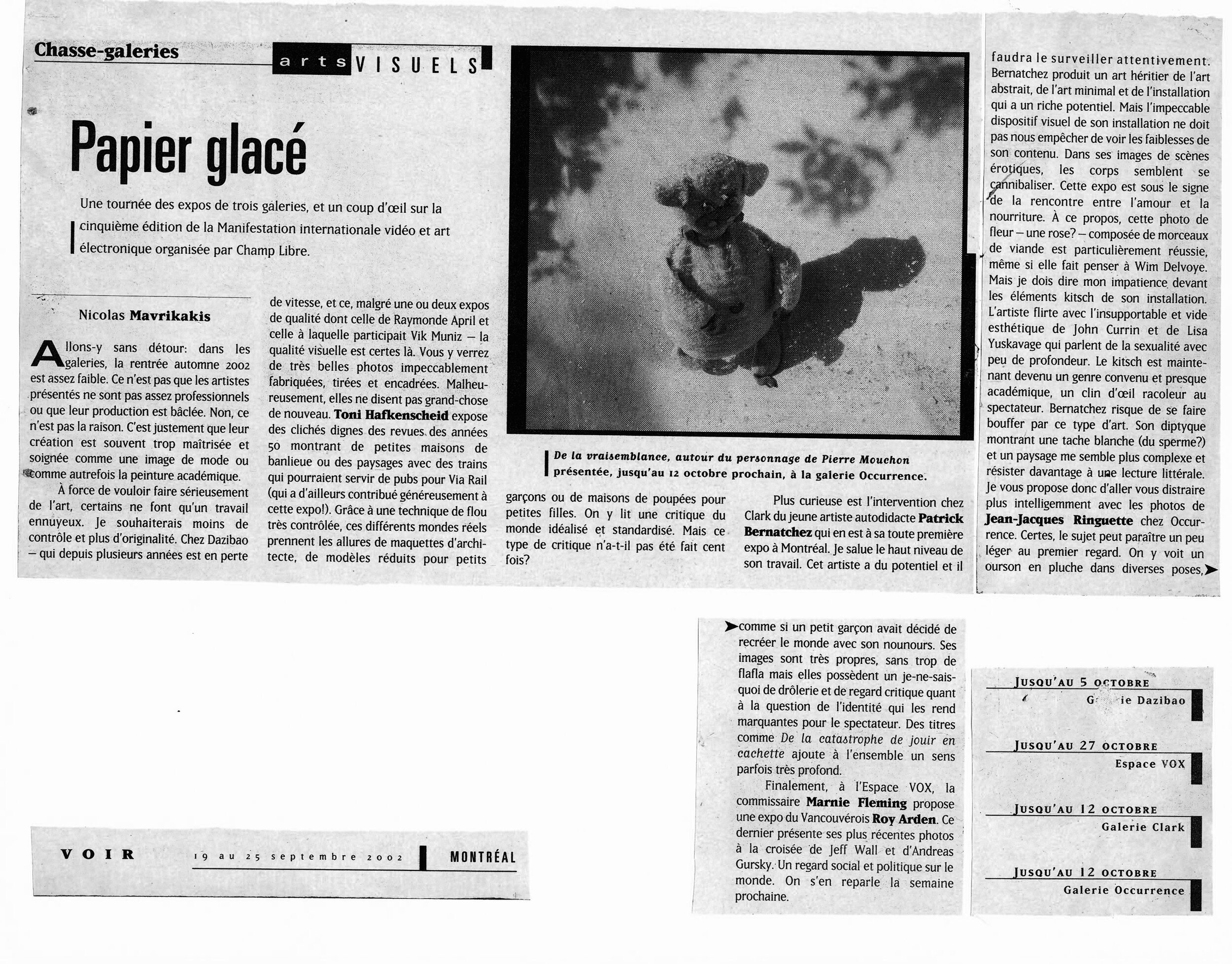Nota Bene : cette sélection comporte des liens vers des documents visuels et audios.
Nota Bene: this selection contains links to visual and audio documents.
Sombre - Méditation sur les abîmes
VU Centre de diffusion et de production de la photographie
Commissaire : Pierre Ringuette
27 octobre au 6 décembre 2023
Sombre - Méditation sur les abîmes
Centre des arts Alain-Larue, Notre-Dame-des-Prairies (Joliette) (Québec)
MURRAY, Karl-Gilbert
Compte rendu de l’exposition Housebound : Portraits from the Winter Garden (Evergon-Ringuette)
in Ciel Variable, No 107, Automne 2017
Interview with the Chromogenic CurmuRMUDGEONS
DC3 ART PROJECTS
EDMONTON, ALBERTA, CANADA
With Evergon and Jean-Jacques Ringuette: The Chromogenic Curmudgeons
November 22, 2017
Evergon, AKA Celluloso Evergonni, has been practicing art, as well as teaching it for close to four decades, and holds a Master of Fine Arts from the Rochester Institute of Technology. Primarily concerned with homo-eroticism, gay male culture, and art historical tropes, Evergon’s work transgresses the historical representation of gender and sexuality. Although his work is largely photographic, for him the medium becomes one of fluidity, something to be teased. Since his first explorations with double exposure in the late 60s, Evergon has perpetually aroused notoriety for his gestural experimentation with photographic mediums.
Jean-Jacques Ringuette, AKA Gigi Angeletti, is an artist originally from Trois-Rivières, Quebec, holding a Masters of Photography from Concordia University; where him and Evergon first met. Known for his black-and-white portraiture explorations, his work has historically explored self-representation and the tradition of the artist represented as a clown. Diverting from the notion of photography being documentary and neutral, Ringuette works through referencing and re-staging, with an emphasis on the the devaluation of the subject.
Together, Evergon and Jean-Jacques Ringuette form a collaborative project know as the Chromogenic Curmudgeons. A portion of Two Old Friends Play Chess was first shown in Montreal, at the Galerie Trois Points just last year (2016), while the entirety of this body of work opened at dc3 Art Projects on September 8th, 2017. While the duo was in town from Montreal, Jessa Gillespie from dc3 Art Projects conversed with them about their history, the intricacies of their partnership, and new collaborative bodies of work.
Three years ago, Evergon bore a failing body and was confined to his home, yet the drive to create endured. Notorious for his defiance of illness, Evergon rekindled a long-standing artistic partnership with Jean-Jacques Ringuette, and together they began to lay down the initial strokes for what would become the Chromogenic Curmudgeons.
Assembling memorabilia from Evergon’s home, the duo shaped spaces that fluidly depict both the artists and the observers. A rich thoughtfulness in texture, palette, and objectal narrative form images that become portraits of the artists themselves, and in turn provide the viewer with opportunities to see themselves reflected in the work.
Constructed directly for the eye of the camera, these painterly still-lives are composed in conversation over several days, resulting in landscapes built by the artist’s subjectivity. Being large-scale photographic work, they subsume you into their worlds’; ones that are full of wit, emotion, provocation, and narrative. Their richness takes form amid a process of responsive action and reaction, creating a joyful jousting match between the two artists.
Two Old Friends Play Chess was shown alongside a solo exhibition by Travis McEwen, The Arch: Plans for a Heterotopic Space Opera. Evergon taught McEwen at Concordia University, and post student-teacher relations, Evergon acquired a painting of McEwen’s which now hangs in his living room. It just so happens that during the creation of Fuschia: The Devil is in the Details (a work within Two Old Friends Play Chess), Evergon and Ringuette decided to leave McEwen’s painting on the wall, letting it be a part of the conversation. The duo was aroused by the coloration of the painting and how it influenced the narrative of their image. At my suggestion that the palette was reminiscent of the Baroque era, Evergon cheekily jumped in to correct me.
< evergon > Well my dear, it’s really more homo-Rococco than Baroque.
Fuschia: The Devil is in the Details, 2015-16, Inkjet on archival paper, 40 x 50 in.
Evergon and Ringuette conversed in tandem, seamlessly finishing each other’s thoughts with a gracious attentiveness. It was immediately clear the affinity they hold for each other, and the mutual respect for the other’s opinions and practices.
A little over 35 years ago, Evergon taught a class that Ringuette was enrolled in at the University of Ottawa. Following their student-teacher relationship, Ringuette started modelling occasionally during Evergon’s Polaroid expeditions; a pioneering endeavor that took use of large-format Polaroid cameras at various institutions (originally at the Boston Museum of Fine Arts), producing 1 x 2 m prints. Along the way, Ringuette became an integral part of the creative process, and this spurred into action almost four decades of friendly collaboration between the two.
< evergon > The late seventies & particularly the early eighties were the time of the beginning of AIDS. Several of the members of the eclectic-circus with whom I worked on the Polaroid cameras, were either ill or dead. It was not conscious at first, but I did start to ask some of the better students to join me on the trips to the Polaroid studios in Boston or NYC. It was a chance for them to participate in the shoots and to work on a camera that none of them would have access to otherwise.
< ringuette > He also just thought I was nice-looking. And I really was pretty cute back then.
The sense of cheek between the two is not lost in the work. From the title,
Oh Ken! You’re such a Gladiator, to
A long, long time ago, before the olden days, the great grey heron was transversing the full moon. Sixth sensing danger, it turned its head back over its shoulder as the golden talons of the bald eagle pierced into its back, its black sword-like beak pierced the eagle’s heart. And the two fell, tumbling out of the moon.,
the metaphoric potential of the image swells. A boldness of language resounds through the images and the collaboration as a whole. The two have given each other many aliases and nicknames throughout the years, but currently existing as Celluloso Evergonni (Evergon), and Gigi Angeletti (Jean-Jacques Ringuette), or Big Hellion and Slim.
< evergon > We just keep visually punning, playing & horsing around.
Their partnership has spawned many impactful bodies of work, most notably Ramboys, works aiming to queer Western art iconography. Ramboys is the documentation of an imaginary race, part satyr and part urban hustler, and their male-to-male cruising grounds, called “Manscapes”. More recently they exhibited their series, House-bound: Portraits from the Winter Garden, a gentle and humorous homage to their house-plants.
< ringuette > I had been staring at this plant for days while working on our House-bound series, struggling to reconcile the composition. The test shots I had taken looked good, but not quite right somehow. Evergon came into the studio one day, rotated the plant an inch, and it was perfect. I was exasperated that I had been struggling so much, but I needed his mind in that moment to resolve the work. This is always how it is, an image would not be without both of us.
The Chromogenic Curmudgeons have been working in concert for the last three years, and have numerous collaborative projects still to be realized.
Install shot of Two Old Friends Play Chess at dc3 Art Projects, 2017.
Under the Watch of the Thalidomide Angel, 2015-16, Inkjet on archival paper, 40 x 50 in.
Oh Ken! You’re such a Gladiator, 2015-16, Inkjet on archival paper, 40 x 50 in.
< evergon > We have already done a complete extension of the House-bound series: Portraits from the Winter Garden. These new images are in the same sizes and vein. The work is called Housebound: Cut, Uncut, and Broke, which may be a description of the Chromogenic Curmudgeons. All along, we have also been working on a series of men and boys Rough-Housing. And there is another test pilot for Tragedies between nature, plants and conveyance vehicles. We have just finished printing our first book entitled The Book of Noods which is a text-book sized semi-flip book.
But, for now, they will pause for a breath, together.
Jean-Jacques Ringuette will continue work on a project tasked with inventing narratives of the figure in nature and in out-of-studio environments. Evergon plans to dedicate his time to a 350-page monograph expected to come out this year under Black Dog Publishing in London, titled Evergon: Lovers and Muses. Evergon has also hinted at a large-scale retrospective exhibition taking place within the next few years, with the location remaining a tantalizing secret.
Four years ago, David Candler, Founder of dc3 Art Projects, sought Evergon out in the hopes of exhibiting his body of work, Margaret and I. That exhibition kindled a relationship between dc3 Art Projects and Evergon that would extend into the present showing of Evergon and Jean-Jacques Ringuette’s concerted project, Two Old Friends Play Chess, which opened on September 8th, 2017.
Entrevue vidéo par Olivier Ricard - Jean-Jacques Ringuette à propos de Félicien / Février 2016
FALVEY, Emily
Compte rendu (anglais) de l’exposition Figures de la mascarade ou La vie passionnante de Félicien
in Revue d’art Esse, No 72, Printemps 2011
Extrait (traduction libre) :
«Ce n’est pas là le genre d’images qu’on aime spontanément. Mais devant le courant actuel qui favorise les œuvres facilement assimilables, les tendances au goût du jour qu’encouragent les institutions, la création d’un corpus aussi déstabilisant pour le regardeur est en soi une réussite notable.»
Jean-Jacques Ringuette, Figures de la mascarade ou La vie passionnante de Félicien - Occurrence, Montreal, January 29 – March 12, 2011
The last decade of artistic practice in Canada has been marked by a growing interest in Renaissance themes and subjects, including cabinets of curiosity, rogue taxidermy, vanitas still lifes, grotesque hybrids, and carnivalesque décor and attire. Recently on display at Occurrence, Jean-Jacques Ringuette’s photographs are a noteworthy example of this trend. An unsettling exhibition, Figures de la mascarade ou La vie passionnante de Félicien combines contemporary aesthetic strategies with historical references to Medieval and Renaissance fools and tragic clowns, as well as Tarot cards, commedia dell’arte, carnival, and even the passion of Christ. The result is a somewhat off-putting exhibition, especially for a viewer unfamiliar with the historical precedents for these images. Without this context, many of the photographs verge on offensive. Les joyeux atermoiements du fatum, for instance, depicts the artist’s clown alias—Félicien—diapered, palsied, and sitting in a wheelchair surrounded by party favours, while in Je ne connais pas cet homme he vulgarly masquerades as an obese, disabled woman.
Although some of Ringuette’s images lack finesse, taken as a whole the exhibition is quite interesting. Perhaps its most valuable quality is an overarching strangeness rooted in a tension between humour and pathos, subtlety and exaggeration. In the accompanying catalogue essay, Penny Cousineau-Levine writes convincingly about the work’s relationship to concepts of the grotesque, carnivalesque, and abject defined by theorists such as Mikhail Bakhtin and Julia Kristeva. She reminds us that the modus operandi of a grotesque universe such as Félicien’s is to overturn “entrenched norms of sobriety, propriety and gender-appropriate behaviour.” In Ringuette’s work, this is achieved through a tension of opposites in which avatars of childhood and senility, innocence and corruption, comedy and suffering are intermingled and confused. For example, a series of photographs based on carnival cutouts (also sometimes called comic foregrounds) twists the whimsical practice of sticking one’s head through a hole in a painted wooden façade into a macabre meditation on the intimate connection between birth and death, decay and regeneration. In these photographs, Félicien’s clown face replaces the head of a teddy bear stuck to a piece of plywood. In each image, the bear’s body assumes a different foolish or abject pose: slipping on a banana peel, wetting itself with greenish urine, sitting atop a pile of refuse, or losing control of its bowels. As with the rest of the exhibition, these are not the kind of images one spontaneously “loves.” Instead, their bizarre and confusing perversity gives one pause. In the current climate of easily digested, corporate-sponsored “hipness,” creating this kind of uncertainty in the viewer is no small achievement.
Entretien radiophonique avec Jean-Pierre Guay et Richard Sainte-Marie, L’Aérospatial CKRL-MF, 19 décembre 2007.
MAVRIKAKIS, Nicolas
Papier glacé in Voir - Montréal, 19 septembre 2002
Extrait :
«Je vous propose donc d’aller vous distraire plus intelligemment avec les photos de Jean-Jacques Ringuette chez Occurrence. Certes, le sujet peut paraître un peu léger au premier regard. On y voit un ourson en pluche dans diverses poses, comme si un petit garçon avait décidé de recréer le monde avec son nounours. Ses images sont très propres, sans trop de flafla mais elles possèdent un je-ne-sais-quoi de drôlerie et de regard critique quant à la question de l’identité qui les rend marquantes pour le spectateur. Des titres comme De la catastrophe de jouir en cachette ajoute à l’ensemble un sens parfois très profond.»
Déry Louise
Extrait du catalogue Espaces intérieurs - Artistes contemporains du Québec
Passage de Retz, Paris, France
Musée du Québec, 1999
Avec la recherche qu'il mène depuis quelques années sur un personnage habité par l'imaginaire de l'enfance, Pierre Mouchon, Ringuette continue de concentrer son attention sur le monde des apparences, des identités troubles et des bribes d'existence irrésolues. Les images de sa plus célèbre série, Ecce homines. Les offenses crépusculaires, exploraient l'iconographie traditionnelle de la peinture d'inspiration religieuse et rappelaient les dépositions, crucifixions, pietà et scènes de martyre qui ont peuplé tout un pan de l'héritage chrétien. D'une manière différente, les photographies de Pierre Mouchon, qui exposent sous de multiples formes, formats et attitudes un animal de peluche sorti du monde de l'enfance, conservent l'idée de croyance et de ferveur, sous les traits cette fois de la candeur et de la magie (Pierre Mouchon imagine les fantômes). Le phénomène de l'apparition, propre au médium photographique, continue de s'opposer au caractère dérisoire et presque humoristique de cet objet qui adopte, en revanche, les caractéristiques insolites et pathétiques de ces corps incertains qui hésitent ou se dérobent. Un double état qui suggère d'ailleurs un paradoxe fréquent dans la démarche de Ringuette, alors que maniérisme et artifice côtoient le réel et le vrai.
Pierre Mouchon archétype de la figure humaine par sa capacité d'incarner ce qui est originaire, rudimentaire, résulte d'un jeu de mot d'esprit dadaïste ou surréaliste - mouton, cochon – capable de véhiculer tout autant les indices d'un discours sommaire que l'ambivalence ou l'ambiguïté d'un personnage incertain (Pierre Mouchon n'est le fils de personne). Les images qui le racontent (Pierre Mouchon se sait observé) montrent déjà un rapport trouble au regard, au fait de voir et d'être vu. Masque et mascarade mettent en porte-à-faux la lecture de ces œuvres, qui oscille entre le drôle et le grave, entre le touchant et le grinçant. Humilié, dissimulé ou enfoui, privé de ses yeux ou contraint à se taire, pantin fragile et balourd à la fois, Mouchon exhibe ses blessures, ses censures et ses infortunes (Voici le bonnet d'âne). Jeux de regard, chimères, fantasmes et fantômes apparaissent, prennent corps dans l'image photographique, libérant ainsi des récits qui montrent bien que langage et enfance s'accompagnent longtemps.
LAMARCHE, Bernard
Collectionneurs de rêves in Le Devoir, 5 et 6 juin 1999
DÉRY, Louise, Jean-Jacques Ringuette - Une dramaturgie des corps (Una drammaturgia dei corpi)
Texte du catalogue de l’exposition présentée à la galerie Il Ponte, Rome, Italie
Musée du Québec et Il Ponte Contemporanea, Rome, Italie, 1998
HARPER, Sharon, Fiction
in CV Photo, No. 32, Automne 1995
Extrait (traduction libre) : «Une certaine «tendance», une tradition a éclos au Québec il y a plusieurs décades avec le travail de John Max, jusqu’à celui de Raymonde April et Michel Campeau. Récemment, la deuxième vague de cette tradition en devenir a commencé à se manifester auprès de la communauté des intervenants en photographie ainsi que du public des arts visuels. Le travail psychologiquement et émotionnellement évocatif d’Anne-Marie Zeppetelli, de Susan Coolen, de Suzanne Grégoire ou de Stéphane Beaulieu, les œuvres socialement critique de Miki Gingras et le travail à caractère intellectuel de Jean-Jacques Ringuette font tous partie de cette nouvelle génération de photographes québécois.»
HERZOG, Hans-Michael, WEIERMAIR, Peter (pour l’extrait) et ERHARD U Heidt
Le corps - The Body / Art contemporain canadien
Extrait du catalogue de l’exposition
Éditions Stemmle AG, Zurich, Suisse et Kunsthalle Bielefeld, Allemagne, 1994
BOGARDI, Georges, inédit, 1994
JEAN-JACQUES RINGUETTE
VU, Quebec City
Exquisitely printed in a dusky sepia tone and framed in wood that looks exotic and rare, Jean-Jacques Ringuette's photographs of male nudes are larger than life in scale and seem somehow beyond it - life, that is - in their ghostly, luminous stillness. Although the models are of a highly recognizable contemporary type - they are the brat-angels who fill the fringe venues of rock music, the waifs with an attitude who skulk around in ads for expensive denim - Ringuette does not practice social documentary. He directs the models to freeze into sinuous, formal poses so they become statues evoking the Mannerism of an antique past. These are carnal images, no doubt, but with "image" being the operative word: The sexual charge of these pictures is as tenuous as the spiritual dimension of a St. Sebastian painted by Pontormo or Sodoma.
Certain comparisons are inevitable. Ringuette studied with Evergon at the University of Ottawa but the resemblence is superficial at best. Evergon's tableaux re-enact scenes from past fictions in a campy celebration of technical virtuosity and divine excess. Ringuette alludes to historical mannerisms in order to make use of their heightened tension between the norms of realistic depiction and the stubborn insistence of artifice and "style." This duality then becomes a metaphor for an eminently contemporary theme: the body as container of the self versus the body as packaging of social attitude and appeal - the blurred, troubling difference between authentic behaviour and posing.
The formal exquisiteness of these photographs will also recall Mapplethorpe, but the American's work is sensational (in every sense of the word) while Ringuette's shocks only by its casting a metaphysical shadow on the smooth surfaces of skin and print. Mapplethorpe equates exhibitionism with confession, and hence with the exorcism of ancient conflicts between public and private selves. This conflict, however, is at the very heart of Ringuette's imagery.
Chastely cut off at the waist by the frame, the models’ artful poses incarnate both the naked and the nude. Their torsos conform to classical standards of beauty, a smooth perfection seemingly uninflected by experience. By contrast, the heads seem ravaged - is it by thought or by the battering of the Other's gaze? And the hands lead anxious lives of their own, grasping for the mannerism that might pass for an authentic gesture.
